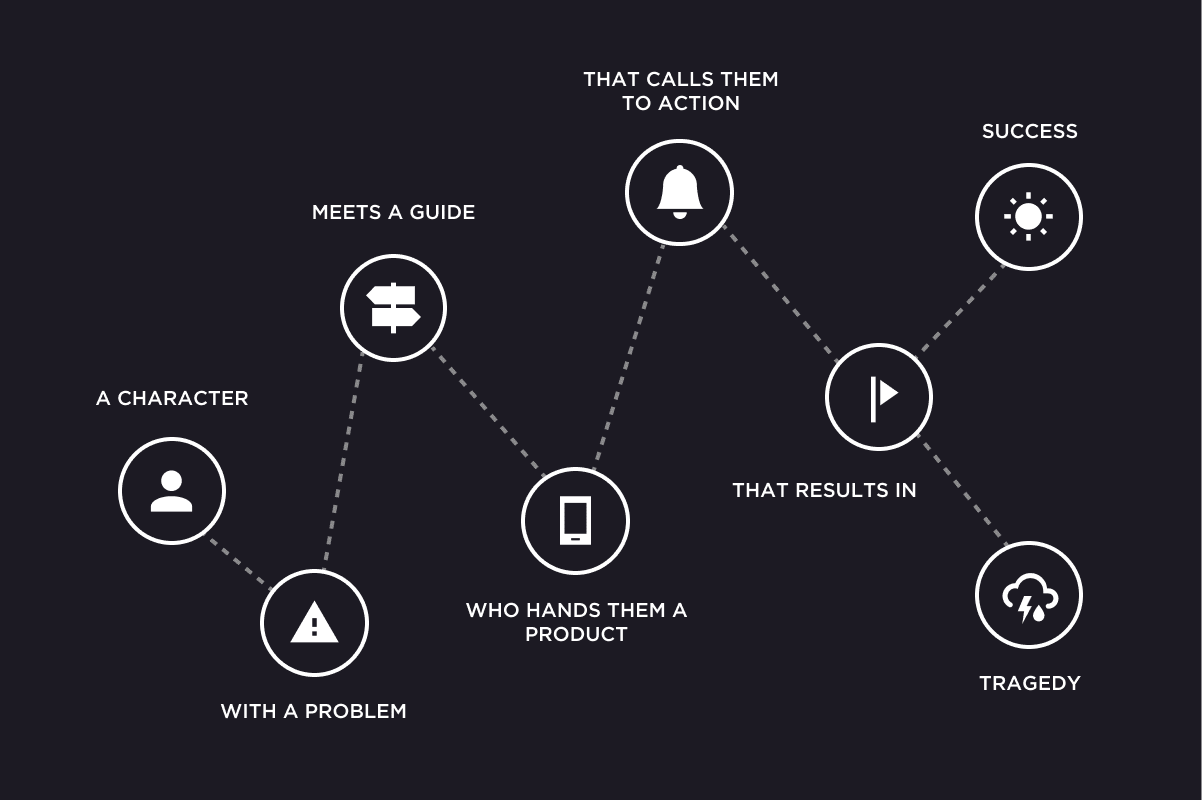People don’t buy features. They don’t buy benefits. And they sure as hell don’t buy products. People buy stories. So to build a successful digital product, you have to be a good storyteller.
Good stories are personal and emotional. They’re relatable. They tug on the heartstrings and elicit a strong reaction from the listener. That’s how you sell a product. Not with a list of features but with an actionable journey each user can join in.
Here’s how you can adapt the StoryBrand framework to create a simple but compelling product story.

A character
Instead of faceless user segments, draw from your product personas to create memorable characters. They’re easier for your team to empathise with and for your target users to relate to.
Has a problem
During a discovery workshop, examine the outcomes your “character” wants to achieve. And map out the pain points they face along the way. These are the challenges that will ring the truest with your target users.
And meets a guide
Once you’ve considered your character and their problem, your role becomes less about you and more about your role in helping your users to achieve their goals. It’s important to show you empathise with each user’s journey and have the authority to help them.
Who gives them a product
Your product is no longer a feature set. It’s a tool to support a much larger, more important, and more engaging journey that customers buy into.
That calls them to action
A clear and direct call to action (whether it’s an in-app purchase, subscription, or form submission) is closely tied to what your users want to achieve and what’s getting in their way.
That results in success or tragedy
When building the right product that delivers the right results, you need to consider what success looks like – for you and your users. Showing clear signs of success upfront (case studies, testimonials, app figures) gives users an insight into what their life will look like once they’ve responded to your call to action.
On the flip side, clearly defining what failure looks like (and how you help your users avoid it) isn’t just a useful internal exercise, it can shape the messaging you use to create an impact.